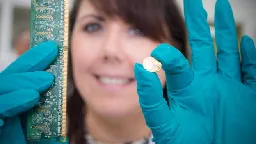Search
The bacteria that can capture carbon: Could minuscule organisms help the world meet its climate goals?
Could minuscule organisms help the world meet its climate goals?

Summary
Scientists are exploring the potential of microbes, particularly cyanobacteria, to help address climate change and other environmental challenges. A new strain of cyanobacteria discovered near Sicily was found to consume carbon dioxide (CO2) rapidly through photosynthesis, converting it into biomass. These microbes can capture more carbon in a shorter time frame and can be grown in non-arable land or seawater, not competing with food production. Researchers are creating a "living database" to share DNA sequences, allowing scientists worldwide to continue studying these microbes. Microbes can also be used to address the decline in pollinator populations, offering a multifaceted approach to environmental issues.
Recycling: The gold jewellery made from old phones
E-waste is mounting. Now the UK Royal Mint has found a new way to extract the precious metals hidden in laptops and phones to reduce our reliance on raw materials.

Summary
The UK Royal Mint has developed an innovative method to extract precious metals, particularly gold, from electronic waste such as discarded laptops and mobile phones. This sustainable and energy-efficient process claims to recover 99% of gold from printed circuit boards, and the Royal Mint plans to open a factory capable of processing 90 tonnes of circuit boards per week, potentially recovering hundreds of kilograms of gold annually. The method involves a chemical solution that dissolves and leaches gold at room temperature and is "environmentally friendly", producing fewer greenhouse gas emissions than traditional smelting methods. The initiative aims to reduce e-waste and the environmental impact of mining for raw materials.
Other Details
-
E-waste is a rapidly growing waste stream, with an estimated 50 million tonnes produced globally each year.
-
Only 20% of e-waste is formally recycled, with the rest often sent to landfill or incinerated.
-
The Royal Mint's initiative is focused on sustainable recycling within the UK and reducing the need to export e-waste for processing.
-
The method has the potential to recover other precious metals like palladium, silver, and copper.
-
The goal is to establish a network of local e-waste suppliers and processors to encourage reuse and reduce waste miles.
-
The Royal Mint aims to generate 70% of its required power from renewables, including energy produced from the waste processing.
-
There is growing interest in recycling e-waste to recover valuable materials and reduce the environmental impact of mining for these resources. Innovative methods like this could drive the growth of a more circular economy for precious metals.